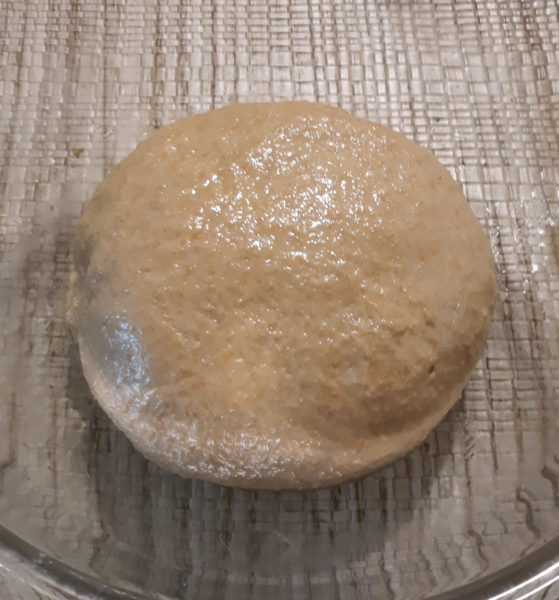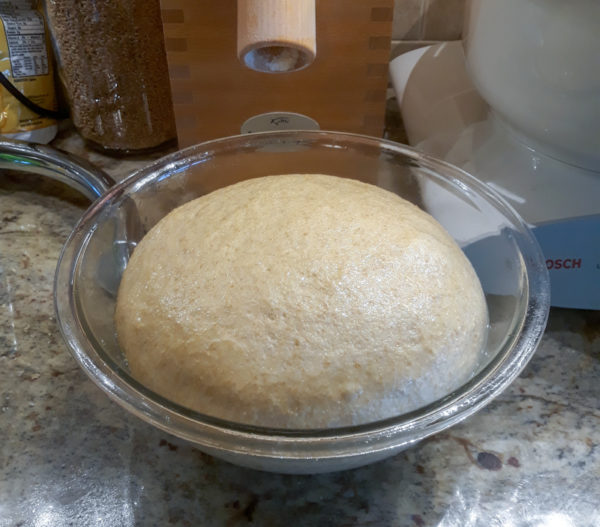This is a bit more than I had planned as far as prepping posts because I don’t want anyone to think you need a wheat grinder and wheat if you want to be prepared. You do not . . but you can if you want to go that route.
A reader had asked for info about this so I’m going to share what I know and trust me, I do not know everything about the various types of grains or mills/grinders. I could read all day about wheat and bread recipes. I love the “chemistry” that goes with making breads with different kinds of flours and it really is a bit of science to get the hydration rate just right. I love experimenting with it.
If you are serious about buying a wheat grinder, do lots of research. It’s a big investment. Like most anything else, most people love whatever brand they’re using and will recommend it so it’s up to you to decide which is right for you.
Why Grind Your Own:
Based on the Family Grain info at Pleasant Hill Grain:
“White flour consists only of the starchy endosperm of the wheat kernel. In its natural form, the endosperm provides wholesome energy, but it’s the least nutrient-rich part of the grain. Removed are the nutrient-packed bran, wheat germ and germ oil.”
When we grind our own, we get the entire grain. if you’ve never had bread, cookies, pastries, etc. made from whole grain, I do hope you can at least try it sometime. I wouldn’t describe bread made from hard red wheat as “chewy” but there’s a different texture to anything made with whole grain flour. Bread made with hard white wheat is a bit sweet and very flavorful. Cookies and muffins made with soft white wheat are heavenly! They are so much different from those made with storebought all purpose flour.
Grinding the wheat really takes just a few minutes. My wheat grinder is always out and if I need a cup of flour, I can dump grain in the grinder, turn it on and have a cup of flour in just a minute. The grinder I use says it will grind 8 to 9 ounces in 1 minute. I don’t even clean it after each use so long as I’m using similar products – basically bread type wheat.
Grinders:
Before I bought each of my grinders, I did research but have not done any research recently so you may not want to rely on my information when choosing a grinder.
The first one I bought, in February, 2008, was the Family Grain Mill. I liked this one because (1) it came with a motor and a hand crank and (2) it has many optional accessories. I’m not sure if it still comes with the hand crank or if that’s an accessory that can be purchased separately. Having a way to use it when there is no electricity was very important to me and that’s why I kept this one even after ordering a new one.
The Family Grain Mill is a great little mill but it does not get the flour as fine as I wanted it. I used it for 7 years and never had any problems with it. Every time I used it, I would disassemble it and clean it before putting it back together for storing. It has lots of little parts where grain/flour can get stuck so it really does need to be cleaned often.
The second one I bought was the KoMo Classic. It’s rather expensive and I don’t recommend it unless you’re sure you’re going to grind a lot of grain but I love it.
The KoMo is easy to use; has a 12 year warranty, has a turn type “dial” for settings and can go all the way from barely cracking corn to making the finest flour you would ever want. This is a blog post where I made cornmeal from corn we had grown. In that post is a picture of the Bosch mixer and I’ll talk about that later but pay attention to that photo.
The Grains:
I almost feel like I should do a separate post on grains because there are so many and so much to say about them. But, I think it would be better to have it all in one post so, forgive me for such a long post. Think of it like this: For a quilter, the mill is your sewing machine/tool; the grain is your fabric/raw material; the bread is your finished product or . . your quilt. That’s a pretty good analogy we should be able to relate to, right?
Before we go any farther, as of this writing (4/2/20), grain mills are hard to find and grain is almost impossible to find. This is a good time to do research and then when things calm down and mills and grain is easier to find, you can make your move. I will do a post later about places I order supplies. There are places online where large amounts of grains (50 pounds) can be ordered but it’s often just as economical to buy it in the small packages, especially when you aren’t real sure what’s right for you.
I haven’t been to a Whole Foods in years but years ago, I could buy grain by the pound there and they had a good variety of grains. Bob’s Red Mill has a variety of grains in small packages. I’ve been able to order grains on Amazon.
Here are some of the various types of grains:
Probably the top three wheats I use are hard red, hard white and soft white. I’m also including rye because I use this often.
The protein levels I’m writing are averages and different websites show different amounts. The protein develops into gluten which traps air which cases bread to rise. When you think about it, the hard red wheat is a heavy wheat with the most protein and that’s what it takes to make it rise, which often it doesn’t even rise a lot. Hard white has less protein but it produces a bit “lighter” flour and works well for loaf breads.
Hard Red Wheat – This is the grain I use for almost all the “wheaty” breads I make. It’s especially good in rustic type breads. I like it in whole wheat loaves too – the ones I want to taste the nutty, earthiness of the grain. The grains are reddish but the flour looks pretty much like any flour. Hard red wheat has a bit more protein than hard white and that’s what makes it good for rustic/denser breads. Hard red wheat should have about 13.% protein.
Hard White Wheat – This is good for loaf breads. It produces a softer, less distinctly, almost sweet flavored wheat. The protein is about 12%.
Soft White Wheat – Soft white wheat is often called “pastry wheat” . The protein content is low at 8.5% to 10.5%. It has a richer flavor than the hard red or white wheats and is mostly used for muffins, cakes, biscuits, cookies, and, of course, pastries.
Rye Berries – One of my favorite breads is pumpernickel. I love the texture of the cornmeal and the taste of the molasses. It is mostly made from rye but a bit of hard white flour. Of course, Vince loves rye bread. I’m still searching for the perfect rye bread recipe. I made the one last week with the pickle juice and Vince really liked it so I’ll probably make it again this week. Rye has 10% protein.
There are other grains I use and I’ll talk about those in a different post.
The Mixer:
I love hand kneading bread. Any bread or rolls I make using storebought flour, I always hand knead. Whole wheat dough is a totally different story. It has to be a very wet dough because, with the entire wheat kernel ground, the dough continues to absorb water. I cannot stand to touch the dough. Really . . I’m pretty tough. I killed a rattlesnake with a butcher knife a couple of years ago but I have to hold my breath and say “I can do this!” several times just to touch whole wheat bread dough before it has done any rising.

This was the dough for the hamburger buns I made earlier this week . . just as I put it in the bowl to rise. Can you see how wet it is? It is sticky and icky and gets under your nails and won’t let go of your hands.

Here it is after it had risen and absorbed most of the excess water. Beautiful, pliable and easy to work with. That dough was about 1/3 whole wheat and 1/3 all purpose (storebought) flour. So, you can imagine how sticky a 100% whole wheat dough would be. I absolutely cannot hand knead it and I don’t know anyone who loves hand kneading whole wheat dough. Also, it takes a long time! With a storebought flour, using a mixer, it might take 3 – 5 minutes to get a good, silky dough. With whole wheat flour, it’s going to take 12 – 15 minutes to get a smooth dough.
I have an old, early 80’s model Kitchen Aid mixer . . back when Hobart made them. It is a work horse but I was afraid that much kneading was going to ruin it so I bought the Bosch Universal Plus Mixer. The mixer is a dream for kneading bread but, as far as mixing goes, that’s the only thing I use it for. I do not like it for cookies, whipping egg whites, cakes . . nothing but bread. So, it’s rather expensive and it will never be the only mixer I own.

There is an extra blender and a shredder that I added. I have no idea where the blender is. It isn’t bad. I used it til I got the Vitamix but that’s all I use now for a blender. But, this shredder. I love it! It’s what I used for the potatoes I made to go with the burgers last night (previous blog post).
All I’m saying is . . don’t count on hand kneading whole wheat dough. I wouldn’t want anyone to buy a wheat grinder, a lot of grain and then realize . . this isn’t going to work because I don’t like hand kneading this dough.

Susan says
Thank you! I feel like I have a starting place now!